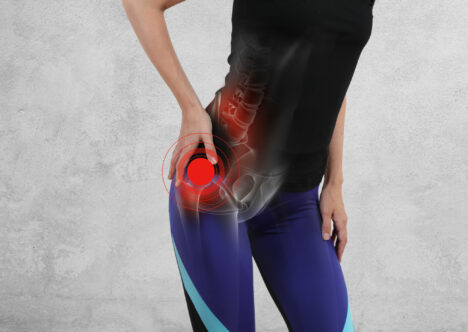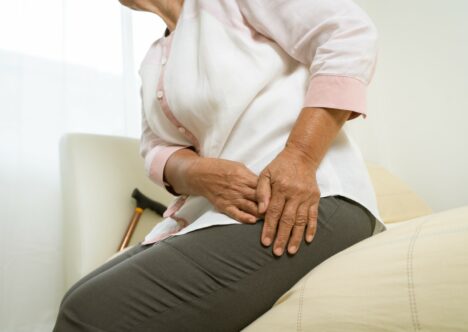Use our convenient online scheduler to book an appointment now.
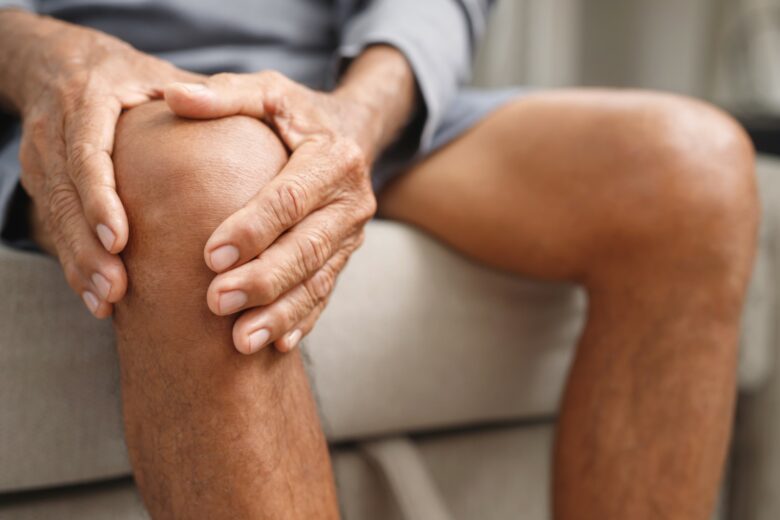
Table of Contents
Knee pain can be a persistent challenge, affecting people of all ages and activity levels. To navigate the complexity of knee pain, it’s crucial to understand the various areas where discomfort can arise. In this guide, we’ll explore the distinct pain areas in the knee and the potential injuries associated with each. Utilize our knee pain location chart to visually understand these common pain points and delve into the intricate details of knee tendon anatomy.
Pain in the Back of the Knee
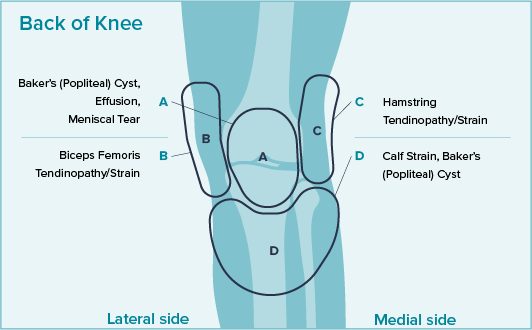
a.) Baker’s (Popliteal) Cyst, Effusion
The back of the knee, also known as the popliteal area, may experience pain due to a Baker’s cyst—a swelling caused by excess joint fluid. Effusion, or fluid buildup, can exacerbate discomfort, often indicating an underlying issue such as arthritis, meniscus tear, or injury.
b.) Biceps Femoris Tendinopathy/Strain
Strain in the biceps femoris, one of the hamstring muscles, can lead to localized pain at the back of the knee. Tendinopathy, or damage to the tendon, is a potential culprit.
c.) Hamstring Tendinopathy/Strain
Hamstring tendinopathy or strain, common among athletes, may manifest as pain at the back of the knee. Overuse or sudden movements can contribute to this discomfort.
d.) Calf Strain, Baker’s (Popliteal) Cyst
Calf strain and Baker’s cyst can also cause pain in the back of the knee. Understanding the specific cause is essential for effective treatment.
Pain in the Front of the Knee
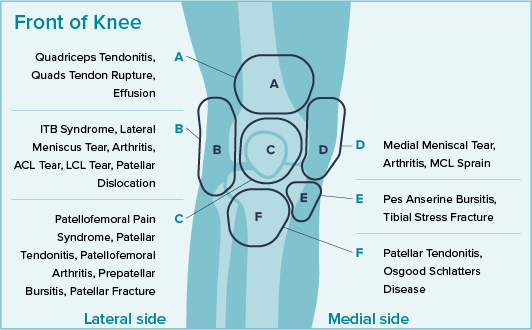
a.) Quadriceps Tendonitis, Quads Tendon Rupture, Effusion
Pain in the front of the knee may result from quadriceps tendonitis or, in severe cases, tendon rupture. Effusion can accompany these conditions, signaling inflammation or injury.
b.) ITB Syndrome, Lateral Meniscus Tear, Arthritis, ACL Tear, LCL Tear, Patellar Dislocation
Various injuries contribute to pain in the anterior region. From ITB Syndrome to ACL tears, each requires distinct treatment approaches.
c.) Patellofemoral Pain Syndrome, Patellar Tendonitis, Patellofemoral Arthritis, Prepatellar Bursitis, Patellar Fracture
The patella or kneecap area is susceptible to multiple issues. Patellofemoral pain syndrome, tendonitis, arthritis, bursitis, and fractures are potential causes of pain.
d.) Medial Meniscal Tear, Arthritis, MCL Sprain
Pain on the front inner side of the knee may indicate issues such as a medial meniscal tear, arthritis, or an MCL sprain. Identifying the root cause is vital for accurate treatment.
e.) Pes Anserine Bursitis, Tibial Stress Fracture
Inner knee pain can stem from pes anserine bursitis or a tibial stress fracture. Recognizing the specific ailment is key for effective management.
f.) Patellar Tendonitis, Osgood-Schlatter Disease
The lower front of the knee is susceptible to patellar tendonitis and conditions like Osgood-Schlatter Disease, which is prevalent in growing adolescents.
Medial (Inner) Pain
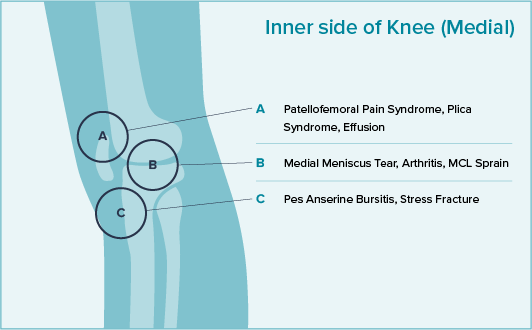
a.) Patellofemoral Pain Syndrome, Plica Syndrome, Effusion
Pain on the inner side of the knee might be attributed to patellofemoral pain syndrome, plica syndrome, or effusion, indicating issues within the joint.
b.) Medial Meniscus Tear, Arthritis, MCL Sprain
Common injuries in the medial region include a medial meniscus tear, arthritis, and an MCL sprain. Identifying the cause is vital for effective treatment.
c.) Pes Anserine Bursitis, Stress Fracture
Pes anserine bursitis and stress fractures can also cause inner knee pain. Understanding the specific ailment aids in devising an appropriate treatment plan.
Lateral (Outer) Pain
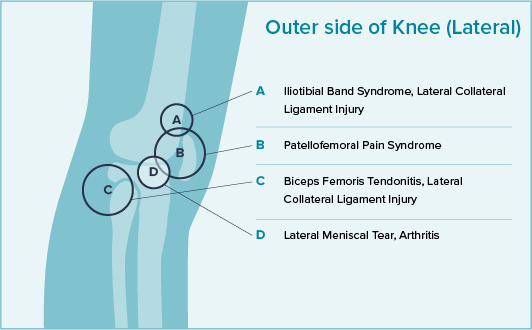
a.) Iliotibial Band Syndrome, Lateral Collateral Ligament Injury
Pain on the outer side of the knee may be due to iliotibial band syndrome or a lateral collateral ligament injury. Proper diagnosis ensures targeted treatment.
b.) Patellofemoral Pain Syndrome
The lateral region can also experience patellofemoral pain syndrome. Identifying this syndrome allows for tailored therapeutic strategies.
c.) Biceps Femoris Tendonitis, Lateral Collateral Ligament Injury
Biceps femoris tendonitis and lateral collateral ligament injuries may contribute to outer knee pain. Precise diagnosis guides effective intervention.
d.) Lateral Meniscal Tear, Arthritis
Issues like lateral meniscal tears or arthritis can lead to pain on the outer side of the knee. Pinpointing the cause is crucial for devising a suitable treatment plan.
Conclusion
Understanding the diverse pain areas in the knee is pivotal for effective management and recovery. Utilize our knee pain diagram and knee pain chart as visual aids to identify specific regions of discomfort. Whether the pain is on the back, front, inner, or outer side of the knee, a targeted approach to diagnosis and treatment is essential for reclaiming optimal knee health.
Request an appointment with one of Town Center Orthopaedics’ healthcare professionals for personalized guidance based on your unique situation.
Join our Mailing List
TCO provides patients with orthopedic problems the trusted resources and patient-centered advice they need to “Feel Better. Move Better. Be Better.”
© 2024 Town Center Orthopaedics | All Rights Reserved
